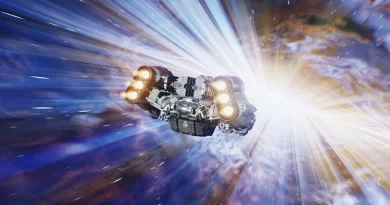photo of How Moon Landing Conspiracy Theories Spread Before the Internet image
Conspiracy theories about the Moon landing have been around for years. Decades, in fact. And while it’s easier than ever to spread false stories thanks to the internet, the belief that humans never landed on the Moon is way older than the web.
How did people learn about Moon landing conspiracy theories before the internet? People of the 20th century had a strange and primitive technology known as books.
The 1974 self-published book We Never Went to the Moon by Bill Kaysing was the first lengthy discussion on the topic committed to paper. Kaysing, who died in 2005, was a technical writer at space contractor Rocketdyne in the 1950s, which led some people to think that Kaysing knew what he was talking about when he insisted that the Moon landings were actually filmed at a production studio in Area 51. People believed Kaysing despite the fact that he would sometimes admit he knew “zero” about rockets.
Kaysing didn’t have to work too hard to convince an already skeptical public that the Apollo space program and the first Moon landing on July 20, 1969 was a sham. Americans of the late 1960s and early 1970s were already living through one of the most disheartening eras of the 20th century, with everything from the Vietnam War to the corruption of Watergate leading the average person to distrust anything their government might be telling them.
The Knight newspaper company in July 1970 found that a whopping 30 percent of Americans believed the Moon landing had been faked. And a Gallup poll in 1976 found that 28 percent of Americans believed that the Moon landing had been staged by the U.S. government—pretty consistent findings throughout the 1970s.

Kaysing thought he had a lot of reasons to believe the U.S. government needed to fake the Moon landing. First, he insisted that it simply wasn’t possible given the technology of the day. This argument was made through a lot of hand-waving and by suggesting that his firsthand knowledge from Rocketdyne gave him some special insight.
“As a witness to many rocket engine tests at the Santa Susana lab, I saw many failures, blowups and premature engine cutoffs due to incipient disaster,” Kaysing wrote in his book. “Even after the relatively modest Atlas engine cluster was accepted by the Air Force for use in the Atlas ICBM, failures occurred with repeated regularity.”
But his most damning evidence that the Moon landing was a hoax was perhaps the most easy to discredit. Specifically, Kaysing wrote, repeatedly, that the absence of stars in the photos taken on the Moon proved humans never went there.
“There are no stars in any of their pictures,” Kaysing told a New Jersey newspaper in 1977. “If they were taken on the moon there would have been some stars in evidence.” The suggestion was that this was some kind of oversight on the part of NASA and proved that it was all fake.
The reality? There are a lot of good reasons that you don’t see stars in the photos from the Moon. But people here in the 21st century probably understand that today better than they could in the 1970s. Anyone who’s used a smartphone to take pictures when there’s a single annoying light source can get easily frustrated. Astronauts are exposed to a lot more direct sunlight in space, so if you expose the photo using an appropriate aperture for the surface of the Moon, you’re not going to capture the relatively little light from stars.
If you set the camera’s aperture wide to capture the stars, you’d get something like this demonstration from a great debunker of the Moon hoax people by VideoFromSpace on YouTube.
Another one of Kaysing’s claims was that acclaimed director Stanley Kubrick was probably involved in faking the Moon landings. Kubrick’s 1968 movie 2001: A Space Odyssey included some of the most impressive special effects work that had been done to date and it helped create the theory that Kubrick had actually directed the footage we know today as the Apollo landings.
“While ‘2001’ was being filmed, Kubrick and his crew consulted with nearly 70 industrial and aerospace corporations, universities, observatories, weather bureaus, laboratories and other institutions to ensure that the film would be technically accurate,” Kaysing wrote. “Had this been done for ASP without the cover of ‘2001’, much suspicion would have been directed towards those making the inquires.”
What’s ASP? According to Kaysing, that stands for the “Apollo Simulation Project.” In fact, Kaysing even points to the ballooning budget of the film as more evidence that Kubrick was in on the moon hoax, insinuating that the director was paid by NASA to stage a cover-up.
Kaysing’s book also included photos of hotels in Las Vegas—the place where Kaysing said the astronauts lived while they were supposed to be on the Moon. In fact, Kaysing suggests that the astronauts insisted on Vegas because guys like Buzz Aldrin, Neil Armstrong, Michael Collins, and their publicity “managers” wanted to live it up in style.
Hard to argue with that, right?
Another piece of “evidence” that Kaysing spends considerable time on throughout the book is the fact that the practice sessions that astronauts conducted look like a fake Moon landing. Admittedly, I made the same joke back in 2014 before I had even heard of Kaysing’s book.
And the photos really do look like prep for a fake landing. But they’re not. They’re just training. Obviously these photos have stuck around and are used on the internet as “evidence” even today.

Ralph Rene is another Moon hoaxer who gained prominence before most American were online, having published a book called MENSA Lectures, retitled The Last Skeptic Of Science after Mensa reportedly sued for using the name without permission. But it was Rene’s second book, published in 1994, that made him a folk hero of the Moon hoax community. Called NASA Mooned America!, the book, which is still available on Amazon, has many similarities to Kaysing’s work in the 1970s, but includes some even more outlandish claims.
One of the most damning pieces of evidence that Rene has? The astronauts don’t look sufficiently excited upon their return. Rene published this photo to show that the astronauts were actually embarrassed that they’d just lied to the American public:

Rene explained:
Is this the look of three men who had just returned from being the first men to walk on the Moon? The Apollo 11 crew have just returned to Earth and are talking to President Nixon from quarantine. This group is definitely not a bunch of happy campers. Could they feel ashamed about something they didn’t do?
I mean, what more evidence do you need?
As the decades went on, a larger percentage of Americans came to accept that we probably landed on the Moon. By 1999, just six percent of us thought that the entire thing was a hoax. Perhaps because as technology advances, things like that seem less wild. But the conspiracy theorists are still out there, obviously. And they’ve got a louder voice than ever, even if their numbers have dwindled.
Kaysing and Rene are no longer around, but they both live on through the waking nightmare that is our internet. Both appear in some of the most popular Moon hoax videos currently online, including one video, “The Truth Behind the Moon Landings,” that has almost a million views on YouTube as of this writing.
You clearly don’t need the internet for a conspiracy theory to spread. And in an age of actual conspiracies perpetrated by powerful people, it’s easy to see the appeal of conspiracy theories like the Moon hoax.
But, like it or not, we probably landed on the Moon. Why? The best evidence, aside from all the movie footage, photos, and Moon rocks, might be a simple argument. Given the camera technology of the 1960s, it would’ve been harder to fake the Moon landing that it would’ve been to just go there. Seriously.
Correction: This article originally stated that Stanley Kubrick was a British director. Kubrick was born in the U.S. and, despite living much of his life in the England, never got citizenship in the UK.
*** This article has been archived for your research. The original version from Gizmodo can be found here ***


